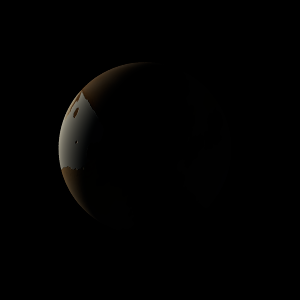|
|
Space Astro
|
Info for exoplanet "Gyagyu Heme"
| Scientific (actual) data |
|---|
| Name | Kepler-110 c |
| Planet status | Confirmed |
| Radius | 0.197 |
| Orbital period | 31.7198 |
| Semi major axis | 0.198 |
| Discovered | 2014 |
| Updated | 2021-02-05 |
| Tconj | 2454980 |
| Impact parameter | 0.01 |
| Publication | Announced on a website |
| Detection type | Primary Transit |
| Alternate names | 2MASS J19314299+4836101 c, K00124.02, KIC 11086270 c, KOI-124 c, KOI-124.02, WISE J193142.99+483610.2 c |
| Star name | Kepler-110 |
| Right ascension | 292.93° |
| Declination | 48.6° |
| Mag j | 11.919 |
| Mag h | 11.658 |
| Mag k | 11.623 |
| Star distance | 596.52 |
| Star metallicity | -0.151 |
| Star radius | 1.15 |
| Star temperature | 5960 |
| Star alternate names | 2MASS J19314299+4836101, KIC 11086270, KOI-124, WISE J193142.99+483610.2 |
| Wikipedia article | Kepler-110 c |
Back
| |
| Fictional info (?) |
|---|
| Suggested name | Gyagyu Heme |
| Planet type | Planet |
| It has the longest rotation period (445 days) of any planet in its solar system and rotates in the opposite direction to most other planets.
The two polar ice caps appear to be made largely of water.
This dark place is said to have hostile earth-like carnivores, the "Yaneke Ridabo", that feed alone by eating anything they find. Most Yaneke Ridabo are closely related to the Momyuki but have scales and vary in length from 40 to 50 mm. The Yaneke Ridabo are known to withstand temperatures from 130 to 160°C but are killed by ultra violet light which is common near the poles. |
| Estimated population | 4000000 |
| Atmosphere | Methane | 97% |
| Water | 1.3% |
| Carbon dioxide | 0.99% |
| Oxygen | 5.0E-6% |
| Atmospheric pressure | 0.005 bar |
 |
| No known satellites |
| Google search for Gyagyu heme |
|
Website by Joachim Michaelis
|
|
|
|